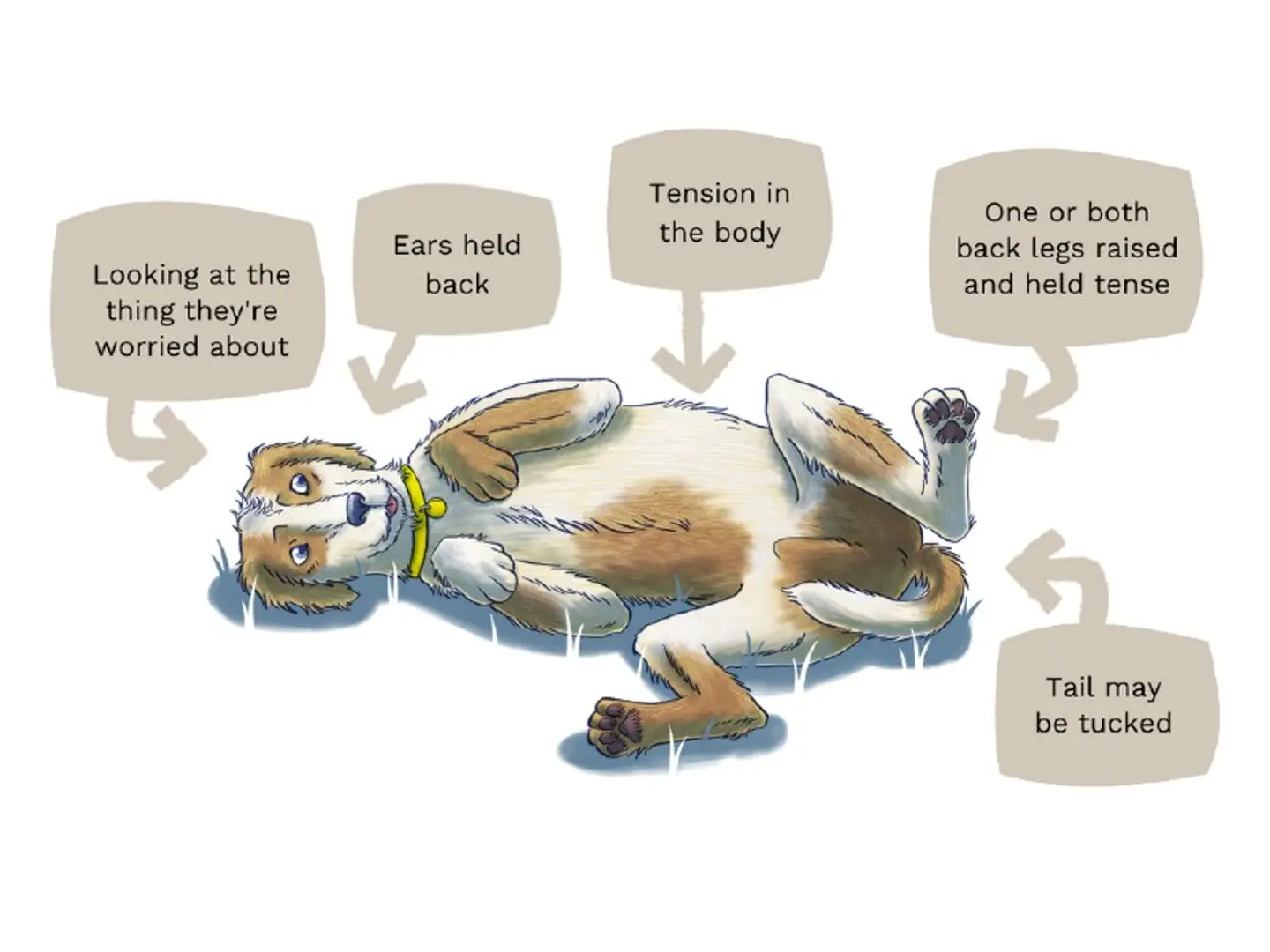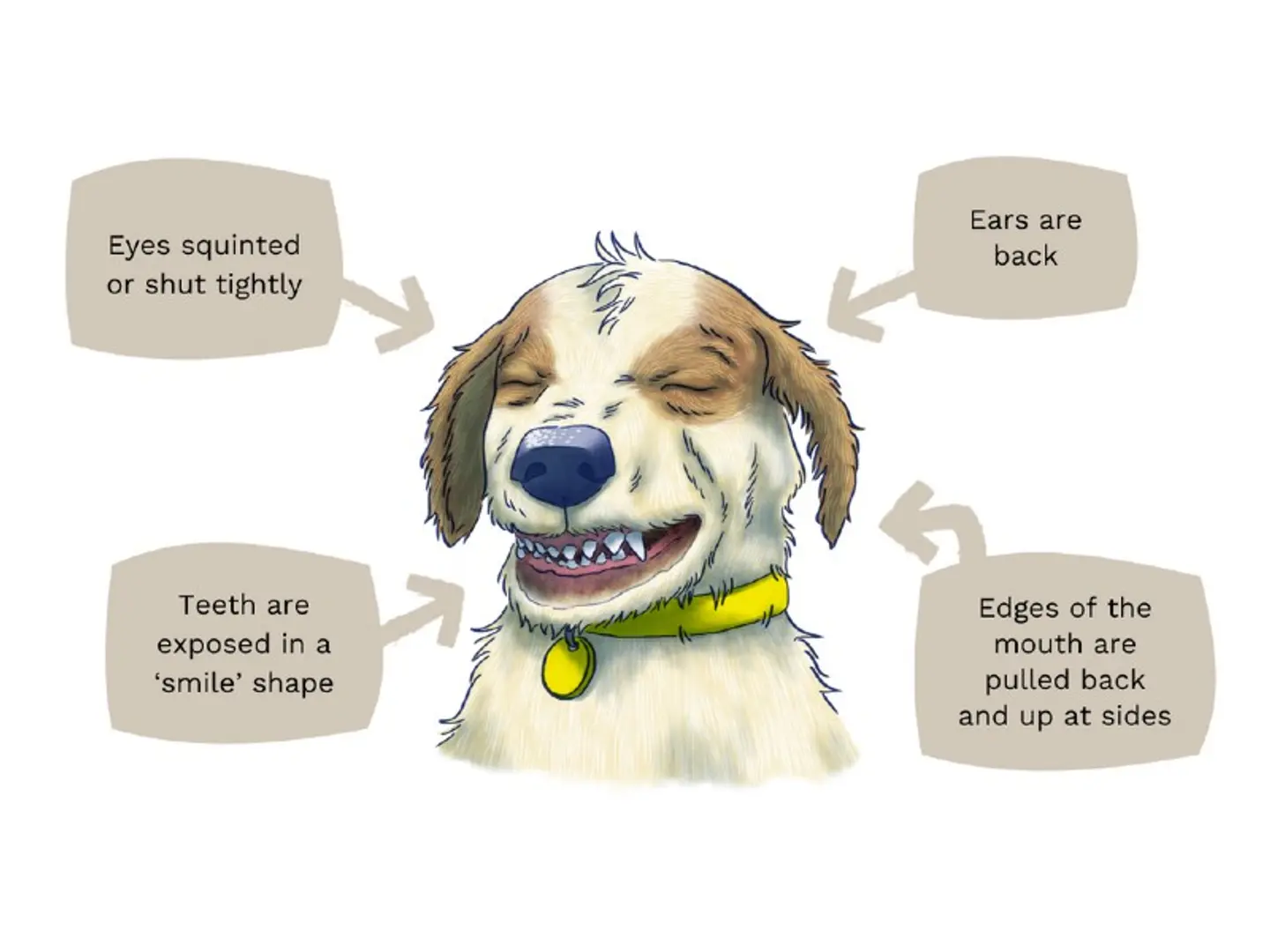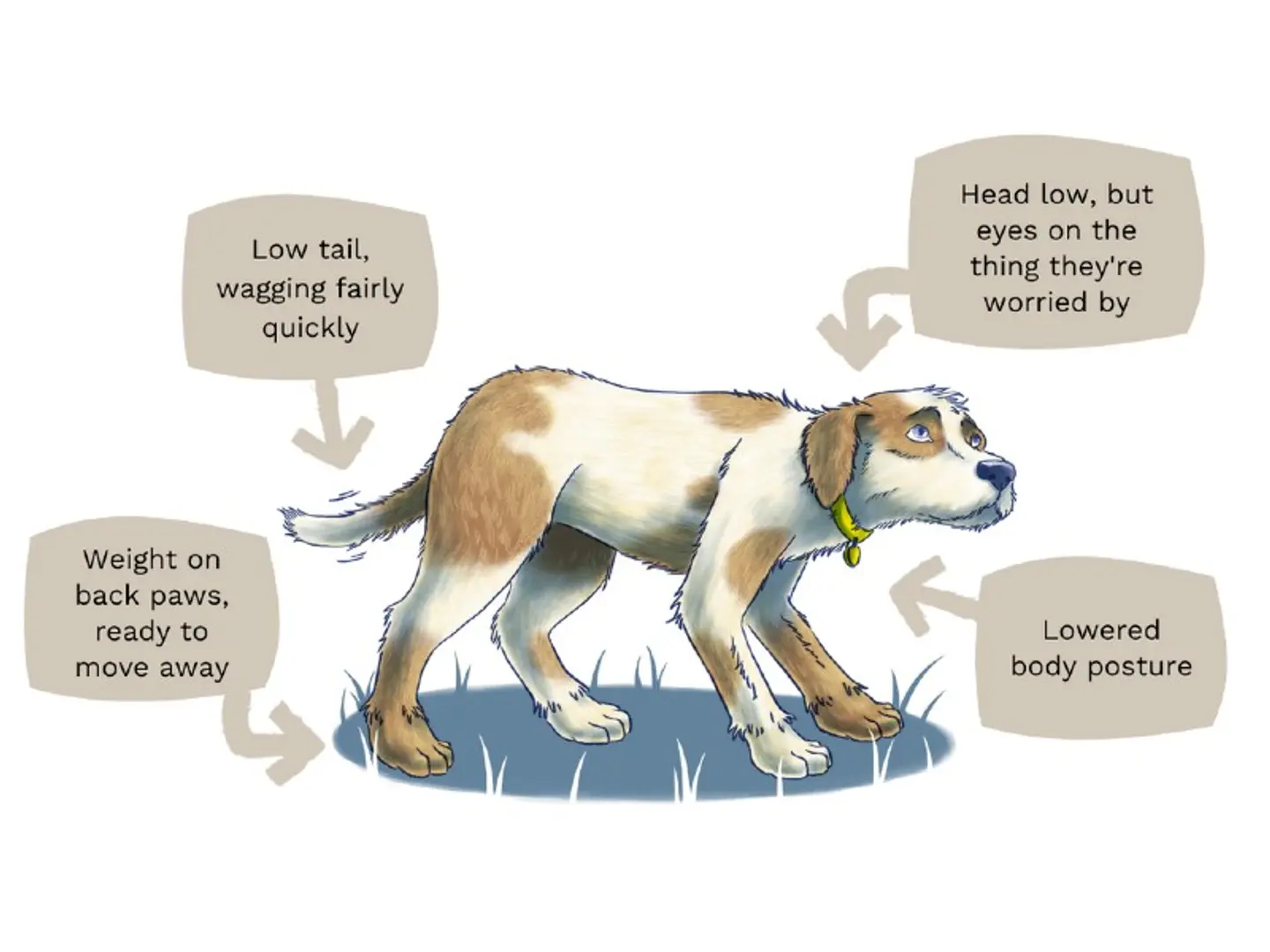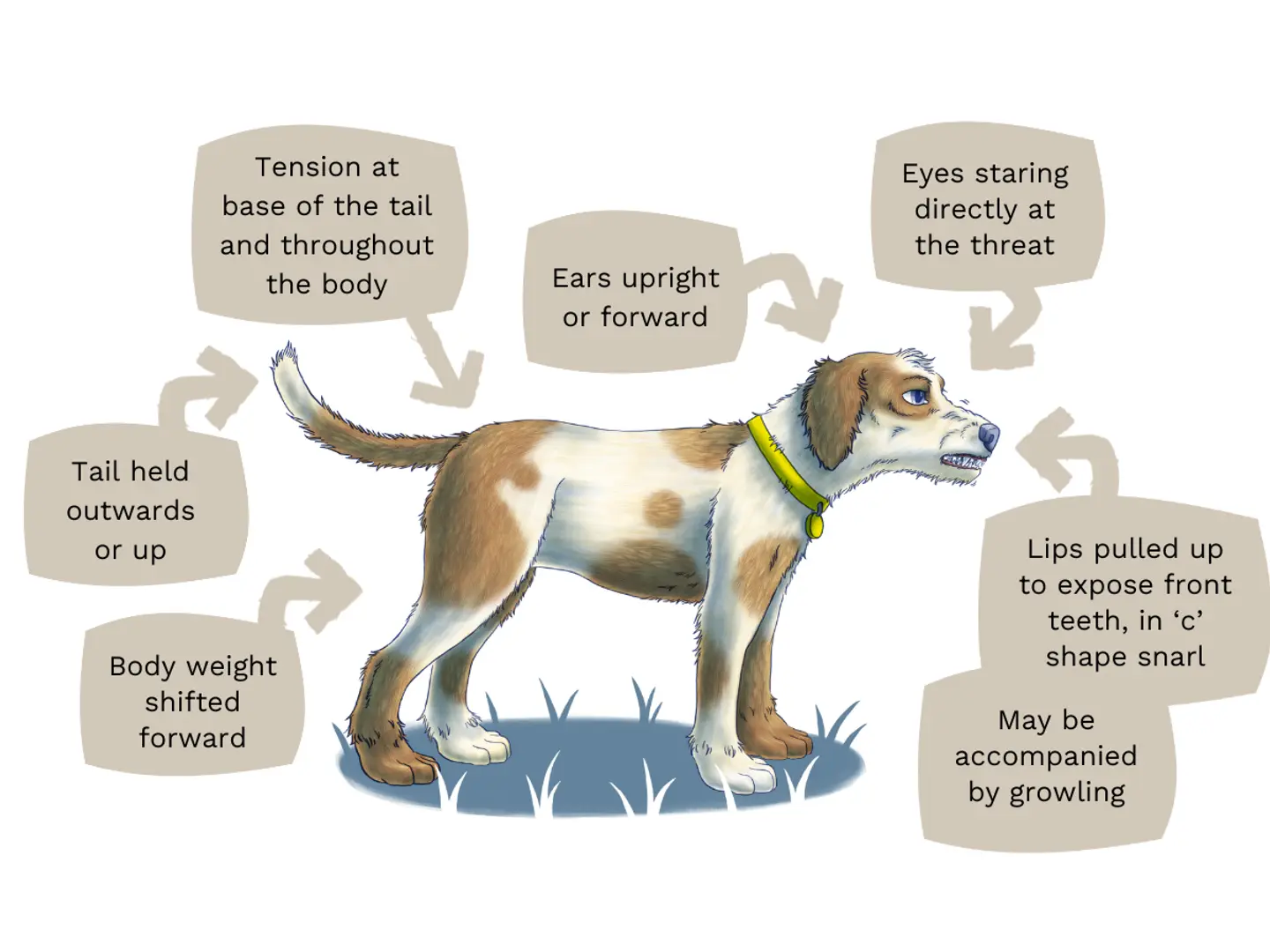Recognising Stress in Dogs and How to Help Your Furry Friend Cope
- Steffi Thake

- Aug 14
- 6 min read
Dogs aren’t just pets; they’re family. If you’ve ever wondered why your pup seems off after a noisy night or a big change, you’re not alone. Like us, dogs can feel stressed, and knowing what to look for—and how to help—makes a world of difference.
How To Recognise the Early Signs of Stress in Dogs
Dogs can’t tell us in words when they’re anxious or worried. Instead, they use body language and changes in behaviour to express themselves. Let’s break down what you might notice, backed by solid scientific research.
Behavioural Signs
Excessive Barking or Whining: Dogs may get more vocal in stressful situations, such as during thunderstorms or fireworks. Research confirms barking and whining are top stress signs recognised by owners .
Destructive Behaviour: Chewing furniture, digging, or scratching doors can signal underlying anxiety—often seen in cases of separation anxiety or environmental stress. This is well-documented among dog owners and researchers.
Pacing or Restlessness: If your dog is wandering back and forth or can’t settle, this may indicate stress. In fact, pacing is a common sign seen before trips to the vet or other unfamiliar events.
Withdrawal: If your dog seeks hiding spots or avoids the usual family activities, stress could be the cause. Dogs often retreat during loud events or sudden household changes.
Changes in Appetite: Skipping meals or eating less after a stressful experience—or, conversely, overeating—can be a subtle sign of anxiety.
Physical Signs
Panting: If your dog is panting heavily while resting (not after exercise or on a hot day), stress may be the trigger.
Trembling or Shaking: Stress can cause physical symptoms, like trembling during fireworks or a thunderstorm.
Excessive Grooming: Licking or chewing at paws and fur can signal emotional distress. This act can lead to skin problems if not addressed.
Dilated Pupils: Wide pupils or more of the white of the eye showing (“whale eye”) often mean your dog is not just alert, but anxious.
Changes in Body Language: Look for a tucked tail, ears pinned back, avoiding eye contact, or stiff posture—these are classic signs seen by trainers and vets alike.
Sometimes, these symptoms overlap with health problems, so it’s always wise to check with your vet if things seem out of the ordinary.
Check out the images below for better visualisations on these physical signs of stress
Images sourced from dogstrust.ie
Types of Stress in Dogs
Understanding why your dog is stressed helps you tackle the root problem, not just the symptoms. Experts split stress into acute and chronic, and into positive (eustress) and negative (distress).
Acute stress results from short-term triggers, like a loud bang or being startled. Dogs may recover quickly once the threat is gone.
Chronic stress is long-lasting, sometimes caused by illness, ongoing changes in the household, or repeated negative experiences. This type can lead to behavioural issues, even chronic health concerns.
Positive Stress (Eustress)
Play and training: Engaging activities challenge a dog mentally, and a bit of excitement or healthy stress keeps them active. Training using rewards (positive reinforcement) both reduces stress and improves bonding.

Socialisation: Meeting new friends—both human and canine—can be stressful at first but usually makes dogs more adaptable and less anxious over time.
Negative Stress (Distress)
Loud noises: Storms, fireworks, or construction can trigger anxiety. Studies show nearly half of dogs have noise sensitivities.
Routine changes: Moving homes, adding new pets, or changes in family circumstances can really upset a dog’s sense of stability—about a third of dogs show stress during major changes.
Separation anxiety: Some dogs really struggle with being left alone and may become destructive, whiny, or withdrawn—14% of dogs experience intense separation anxiety.
Health issues: Pain or illness can fuel stress, so regular vet checks help catch these problems early.
Not all stress is bad, but too much negative stress can lead to lasting behavioural and health issues. Look for shifts in your dog’s usual routine or temperament.
What Does the Science Say About Coping Strategies
Researchers and professionals agree—dogs can cope better with stress when we make some targeted changes to their routine and environment.
Environmental Enrichment
Adding variety and stimulation to a dog’s environment works wonders. Several studies show that enrichment—like puzzle toys, social play, and interactive activities—reduces stress and unwanted behaviours.
Interactive toys: Puzzle toys engage your dog’s mind and can reduce stress. While numbers vary, quality play and mental stimulation consistently show positive results.
Exercise: Daily walks and play activities are proven to improve mood and reduce anxiety.
Safe spaces: Giving dogs a quiet, dedicated spot for downtime is both comforting and protective.
That said, not all enrichment works equally for every dog. Case studies show food-based enrichment isn’t always as effective as social play or interactive activities, so mix it up to see what suits your dog best.

Training & Socialisation
Positive reinforcement—rewarding good behaviour with treats, praise, or play—is more effective and humane than punishment-based methods. Scientific trials have shown this approach both reduces stress and strengthens the owner-dog relationship.
Gradual, low-pressure exposure to new experiences (people, places, sounds) helps dogs gain confidence without overwhelming them. Socialisation classes can help overly shy or anxious dogs adapt to stressful scenarios in a safe way.
Professional Help & Medication
Some forms of canine stress need more than lifestyle tweaks. Vets and behaviourists can rule out medical causes and offer tailored programs or therapies. In severe cases, medication such as fluoxetine has been shown to reduce separation anxiety and destructive behaviours, although some dogs may experience side effects like lowered appetite or sleepiness.
Do not give your dog any medication without consulting a veterinarian.
How Can I Help My Stressed Dog?
You know your dog best. Here’s how to make their world a little calmer:
Quiet Spaces
Minimise loud noises. If fireworks or storms are on the way, set up a cozy, safe and comfortable zone with your dog’s favourite blankets and toys.

Try Calming Aids
Pheromone diffusers, specially-designed collars, and anxiety wraps have anecdotal support, but results can vary. Think of these as supplements to—not replacements for—good care and training.
Establish a Routine
Consistent Schedule: Stable routines around walks, feeding, and play help dogs feel secure, especially during big life changes.
Predictable Environment: Keeping your dog's environment stable can help them feel more comfortable and settled.
Engage in Regular Exercise
Daily Walks: Regular walks not only provide physical exercise but also mental stimulation, which helps in managing anxiety.
Interactive Playtime: Engaging in longer, interactive play sessions can help release pent-up energy and reduce stress. Plus, it's fun for you too!
Health Check
Balanced Diet: Diet plays a part in your dog's health and behaviour. Ensure they're getting a balanced diet that supports overall well-being.
Regular Vet Check-ups: Routine veterinary visits will help catch health issues that may contribute to stress.
Challenging Assumptions & Counterarguments
Not every “trend” in dog training or wellness is backed by science. For instance, punishment-based methods for managing stress and anxiety not only fail to address the underlying causes but are proven to increase stress and damage the bond between owner and dog . Similarly, relying solely on medication is rarely the answer; a blend of enrichment, routine, and professional input yields better, longer-lasting outcomes.
It’s worth noting that what works for one dog may not suit another. Breed, past experiences, and personality all play a part—so owners should keep an open mind, get creative, and observe how their dog responds.
If you’re worried about your dog’s stress, the best option is to observe, try helpful interventions, and ask for guidance. Every dog deserves a safe, happy life—and with your help, they can find calm even when life gets noisy.
📞 Get in touch with us for support 🤲🏻
References 🎓
Blue Cross (2023). Stress in dogs. Blue Cross Animal Charity. Accessed on 14 Aug, 2025 from: https://www.bluecross.org.uk/advice/dog/behaviour-and-training/stress-in-dogs.
Dare, P., et al. (2023). The Use of Environmental Enrichment and Its Effectiveness in Reducing Stress-Related Behaviors in Kennelled Dogs. Animals, 13(4), 77596. https://pmc.ncbi.nlm.nih.gov/articles/PMC10177596.
Echeverri, N. S., & Govendir, M. (2022). Does the selective serotonin reuptake inhibitor (SSRI) fluoxetine reduce separation anxiety in dogs? Veterinary Evidence, 7(3), 585-781.
Ellevet Sciences (2024). The difference between acute and chronic stress in dogs. Accessed on 14 Aug, 2025 from: https://www.ellevetsciences.com/cbd-for-dogs/the-difference-between-acute-and-chronic-stress-in-dogs/.
Garvey, M., Stella, J., & Croney, C. (2019). Implementing Environmental Enrichment for Dogs. Purdue University Center for Animal Welfare Science. Available at: https://extension.purdue.edu/extmedia/VA/VA-13-W.pdf
Hekman, J. P., et al. (2014). Psychogenic Stress in Hospitalized Dogs: Cross Species Comparisons. Journal of Veterinary Behavior, 9(2), 122-134.
Hunt, R. L., et al. (2022). Effects of Environmental Enrichment on Dog Behaviour: A Pilot Study. Animals, 12(1), 36298.
Kennel Club (2023). Anxiety in Dogs: Results of Awareness Study. Accessed on 14 Aug, 2025 from: https://www.thekennelclub.org.uk/media-centre/2023/august/alarming-research-shows-up-to-nine-in-ten-dont-know-crucial-signs-of-anxiety-in-dogs/.
Malkani, R. (2023). Recognising stress in dogs. BSAVA. Accessed on 14 Aug, 2025 from: https://www.bsava.com/article/recognising-stress-in-dogs-rachel-malkani/.
Mills, D. S., et al. (2011). Perception of dogs’ stress by their owners. Journal of Veterinary Behavior, 6(6), 377-384.
Marlowe, A. R., et al. (2014). The benefits of positive reinforcement in dog training. Journal of Veterinary Behavior, 9(3), 145-155.
Northwoods Animal Shelter (2024). Scientific Benefits of Positive Reinforcement vs. Negative Reinforcement in Dog Training. https://www.northwoodsanimalshelter.org/blog/scientific-benefits-of-positive-reinforcement-vs-negative-reinforcement-in-dog-training.









Comments